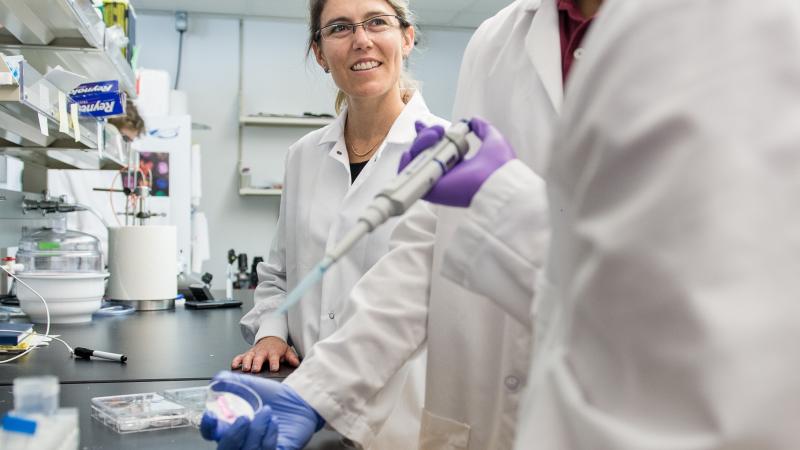Findings could guide future research into the biomechanics behind cancer migration
April 2, 2020

TROY, N.Y. — There is a growing appreciation within the research community for the ways in which the biomechanics of the tumor environment may contribute to how its cells grow and even spread throughout the body. The closer researchers can get to re-creating those mechanical factors in the lab, the better they will understand tumor cell migration and how to stop cells before they invade other tissue.
In research recently published in Acta Biomaterialia, a team of mechanical engineers at Rensselaer Polytechnic Institute demonstrated a new technique for creating an in vitro — outside an organism — model for studying tumors that is more complex and, therefore, closer to what cancer cells may encounter in the body.
“We’ve come closer to the architecture of how collagen is organized in the tissue than any other collagen-based model to date,” said Kristen Mills, an assistant professor of mechanical, aerospace, and nuclear engineering at Rensselaer, and a member of the Center for Biotechnology and Interdisciplinary Studies.
Collagen is the main protein that makes up the external structure of a cell, known as the extracellular matrix. Therefore, it’s also often a main component of in vitro models used to grow tumor cells in the lab.
The stiffness of that collagen-based extracellular matrix model matters because, as Mills has seen in previous research, a change in stiffness gives the tumor a structural cue that contributes to cancer progression. Creating a model that can mimic that tunable stiffness is important.
Researchers have also found that in vivo — within an organism — the architecture of the collagen extracellular matrix plays a role in cancer progression. In the tumor environment, collagen forms fibrous bundles that act as a highway of sorts, upon which cancer cells migrate out of the tumor in order to invade other tissue. During their formation, Mills said, these fibrous bundles take on a specific size and structure that are thought to allow the cells to spread more easily. Right now, that process is not fully understood, which makes creating a model that mimics that structure more closely so important.
“We noticed those fibrous structures are usually much larger than what’s been created in the lab, and so the goal of this is to create better models of the tumor-associated extracellular matrix,” said Xiangyu Gong, who recently earned his Ph.D. in mechanical engineering in the Mills Lab at Rensselaer and is now a postdoctoral researcher at Yale University.
The Rensselaer team was able to find the right combination of ionic strength and temperature to induce collagen — that has been isolated from tissues — to form micron-scale bundles instead of the nano-scale fibrous gels that are typically used in cancer research. The researchers then created a microfluidic channel to align the bundles — much as they would be within the body.
“We can now study how the cancer cells interact with the collagen bundles, with something on the size scale that would be seen in vivo,” Mills said. “This process, the migration, can now be studied.”
“We found these aggressive cancer cells will follow these highways we created, which looks very similar to the in vivo images of these cancer cells trying to get out of the original tumor site,” Gong said.
This new approach allowed the researchers to combine their newly created collagen bundles with a type of gel whose stiffness can be tuned, in order to provide a more accurate and controllable model that can mimic both the structure of the tissue within the body and the mechanical cues that communicate with a tumor.
Mills and Gong hope this research sends a broader message about the importance of using complex and holistic models that more closely mimic the systemic conditions tumor cells encounter within the body.